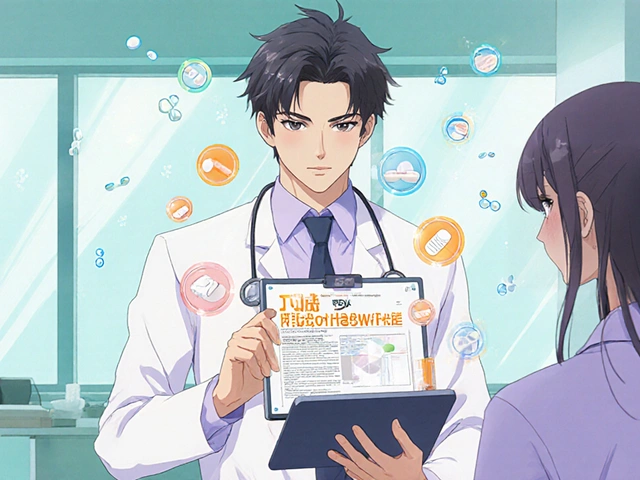UTI Antibiotics: What You Need to Know
Got a urinary tract infection (UTI) and wondering which pill will clear it up? You’re not alone. Most people get a prescription for an antibiotic, but the choices, dosing, and side‑effects can feel confusing. This guide breaks down the basics so you can talk confidently with your doctor and use the medicine safely.
Top UTI Antibiotics and How They Work
The most common first‑line drugs are trimethoprim‑sulfamethoxazole (Bactrim, Septra), nitrofurantoin (Macrobid, Macrodantin), and fosfomycin (Monurol). They target the bacteria that usually cause UTIs—E. coli, Proteus, and Klebsiella. Trimethoprim‑sulfamethoxazole blocks two steps in bacterial DNA production, while nitrofurantoin damages bacterial cells as they pass through the urinary tract. Fosfomycin is a single‑dose option that interferes with cell wall building.
If your infection is more severe or you have a kidney infection, doctors may switch to fluoroquinolones like ciprofloxacin or levofloxacin. These are powerful but have higher risks of tendon issues and nerve problems, so they’re saved for tougher cases.
Tips for Safe Use and Managing Side Effects
Take the antibiotic exactly as prescribed—same time each day, full course, even if you feel better after a couple of days. Stopping early lets bacteria survive and can cause a repeat infection that’s harder to treat.
Watch for side effects. Common ones include mild stomach upset, nausea, and a temporary change in urine color (especially with nitrofurantoin). If you notice a rash, fever, or swelling, call your doctor right away—these could be signs of an allergic reaction.
Stay hydrated. Drinking plenty of water helps flush bacteria out and reduces the chance of the medicine irritating your bladder. A good rule of thumb is at least eight glasses a day unless your doctor says otherwise.
Avoid alcohol with some antibiotics, especially the fluoroquinolones. Mixing can increase dizziness or heart‑beat changes. Also, tell your pharmacist about any other meds you’re on; drug interactions can make antibiotics less effective or cause new problems.
Resistance is a growing issue. Overusing antibiotics or using the wrong one gives bacteria a chance to adapt. That’s why it’s key to follow the prescription and only use antibiotics when a doctor confirms a bacterial UTI—not for every urine‑related symptom.
If your symptoms linger after finishing the course—persistent burning, frequent urges, or fever—reach out to your healthcare provider. You might need a urine culture to pinpoint the exact bug and adjust the treatment.
Finally, keep a simple record: date you started the med, dosage, and any side effects you notice. This helps you and your doctor spot patterns and choose the best next step if another infection occurs.
UTI antibiotics are effective when used correctly. By knowing the common options, understanding how they work, and staying alert to side effects, you can get back to feeling normal faster and avoid future complications.

Noroxin (Norfloxacin) Uses, Side Effects, Dosage, and Safer Alternatives in 2025
What Noroxin (norfloxacin) is, who should and shouldn’t use it, 2025 availability, dosing, major risks, interactions, and safer antibiotic alternatives.




